Driving east out of Death Valley we crossed into Nevada, keeping an eye out for wild burros as the road signs warned. Sure enough, we spotted several on our way to Las Vegas. Las Vegas is not my kind of place so I was dubious when Jim suggested adding it to our road trip plans, but he assured me that there were interesting things to see (the Hoover Dam) and wilderness places to explore (Red Rock Canyon and Valley of Fire). 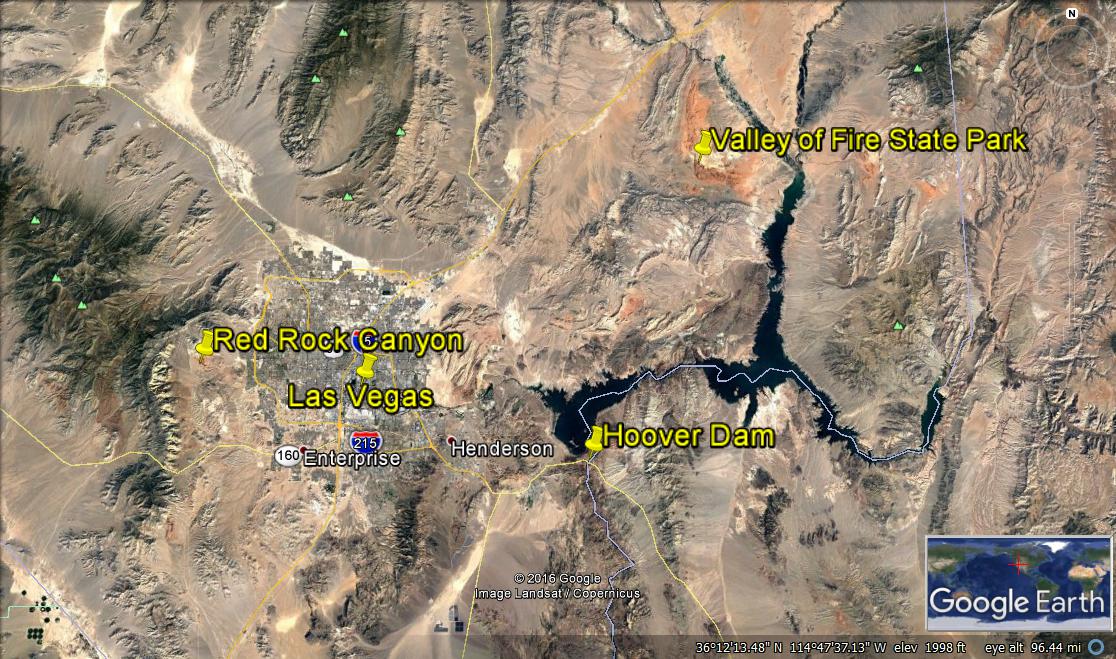 I never knew there were such neat places to see just outside the city, though I confess that we set foot in a casino on one evening – but only to meet a friend for dinner.
I never knew there were such neat places to see just outside the city, though I confess that we set foot in a casino on one evening – but only to meet a friend for dinner.
Hoover Dam is really quite interesting, and we spent most of a day there thinking nerdly thoughts and appreciating the feats of engineering required to build this massive dam in the 1930s.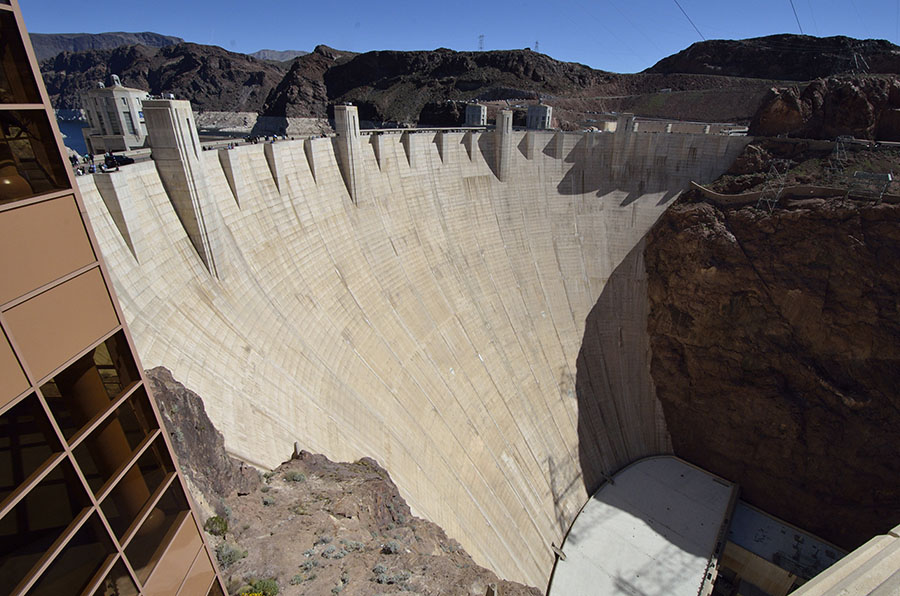 We took the full tour of the dam, getting inside the structure to learn about power generation…
We took the full tour of the dam, getting inside the structure to learn about power generation…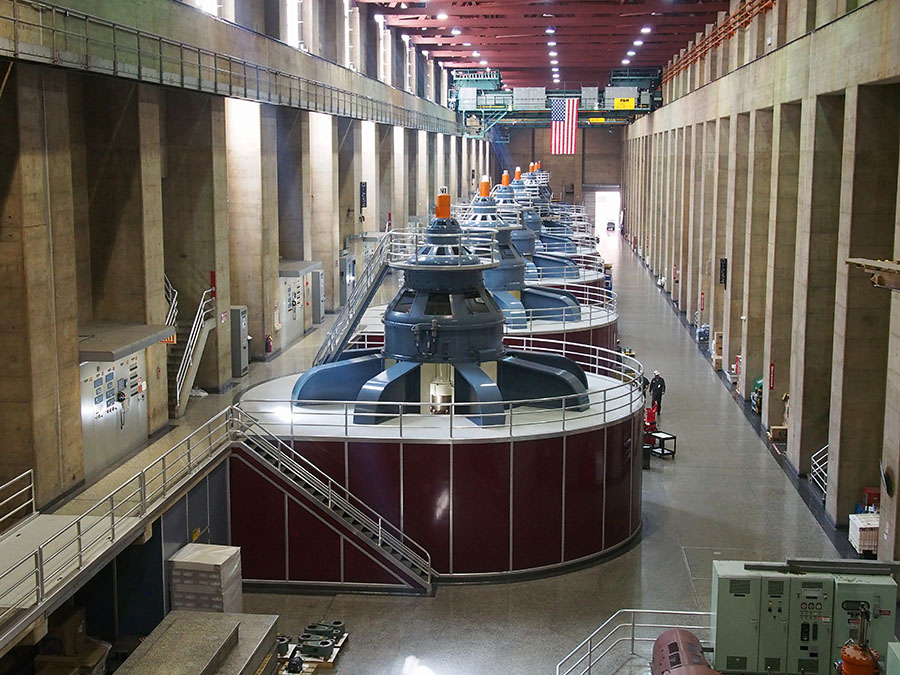 …and even walking hunched over to a ventilation grate in the middle of the dam to shoot a few photos from an unusual location.
…and even walking hunched over to a ventilation grate in the middle of the dam to shoot a few photos from an unusual location.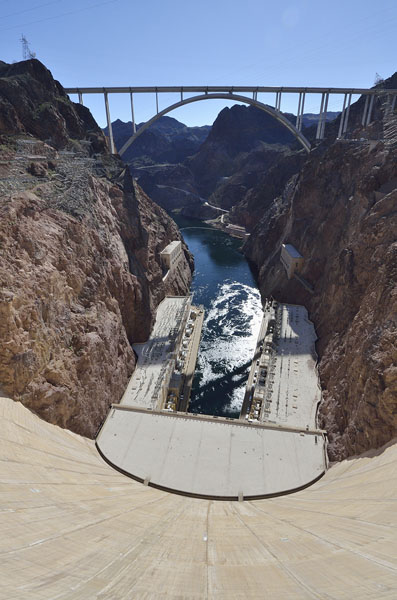 The most interesting thing we learned in our big dam day was that the dam is strictly there to control the flow of water downstream (to agriculture and population centers primarily in southern California). We thought power generation was important, but it’s entirely secondary to the water control. If there’s a need for water downstream then power will be produced, otherwise most of the generators remain offline.
The most interesting thing we learned in our big dam day was that the dam is strictly there to control the flow of water downstream (to agriculture and population centers primarily in southern California). We thought power generation was important, but it’s entirely secondary to the water control. If there’s a need for water downstream then power will be produced, otherwise most of the generators remain offline.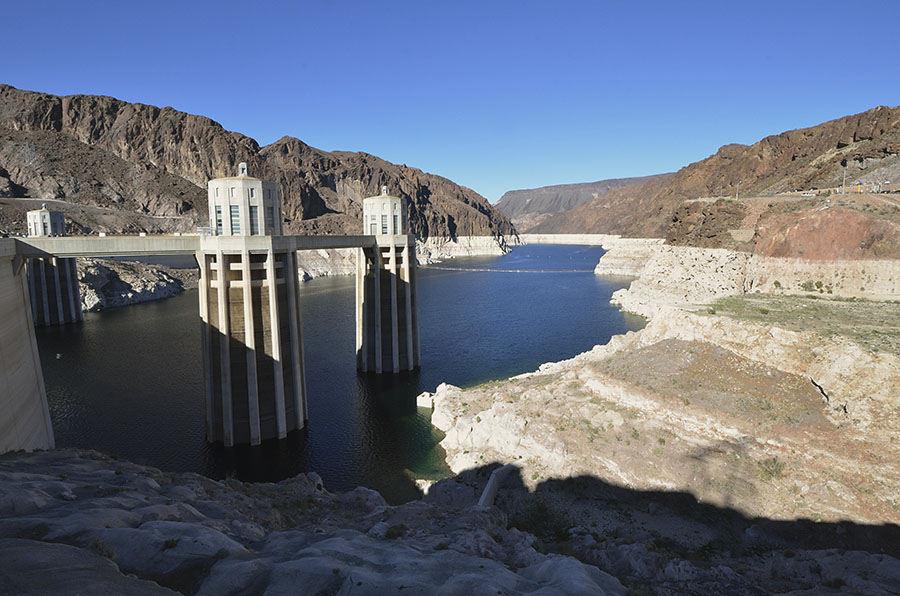 In the photo above you can see the light colored mud line on the shores of Lake Mead – it’s 142′ above the current lake level. The annual draw on the lake level is about 16′ and the average increase in lake level is 11′, so the dam has been running a 5′ deficit per year. Sobering.
In the photo above you can see the light colored mud line on the shores of Lake Mead – it’s 142′ above the current lake level. The annual draw on the lake level is about 16′ and the average increase in lake level is 11′, so the dam has been running a 5′ deficit per year. Sobering.
On a lighter note, we spent two days hiking and exploring the Red Rock Canyon National Conservation Area – a splash of red and tan “calico” rock formations less than 30 minutes from downtown Las Vegas.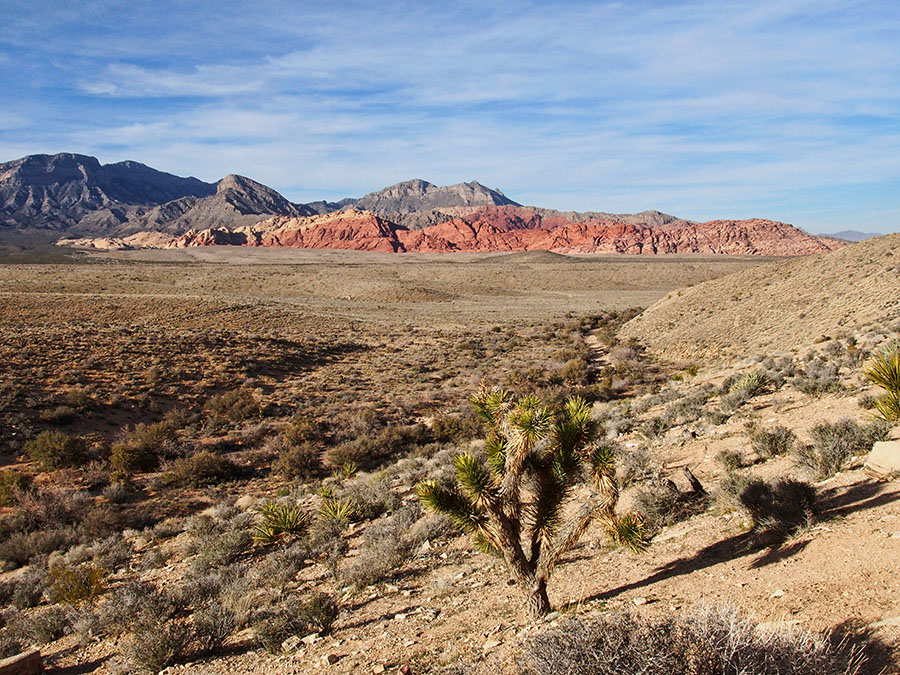 There’s a superb visitor center with excellent displays and views, a 13 mile scenic drive, hiking trails and petroglyphs. With glorious 80 degree weather the canyon was very popular, even on weekdays, but we enjoyed the hiking and the striking colorful scenery.
There’s a superb visitor center with excellent displays and views, a 13 mile scenic drive, hiking trails and petroglyphs. With glorious 80 degree weather the canyon was very popular, even on weekdays, but we enjoyed the hiking and the striking colorful scenery.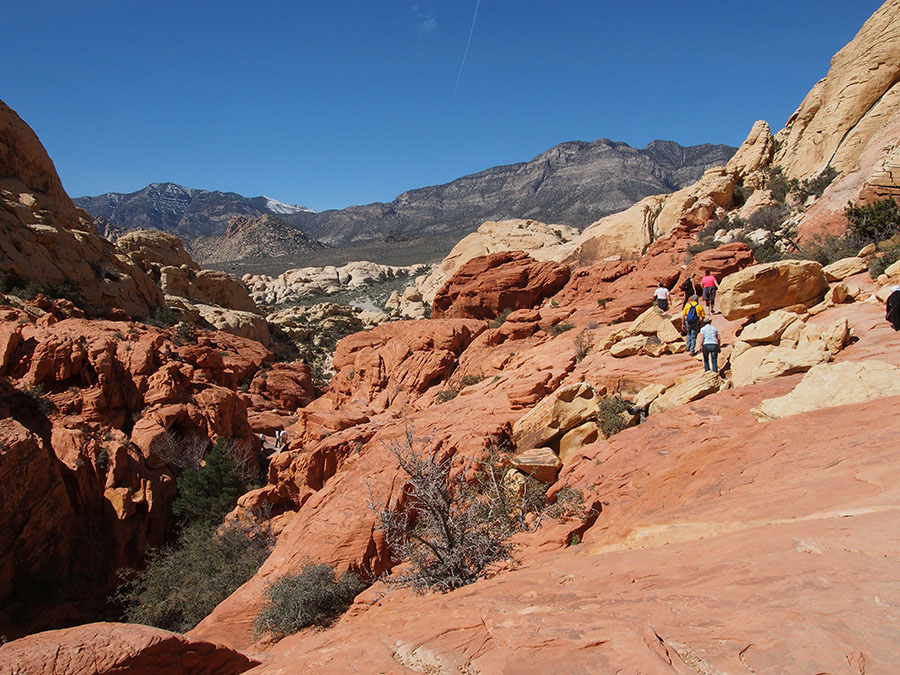
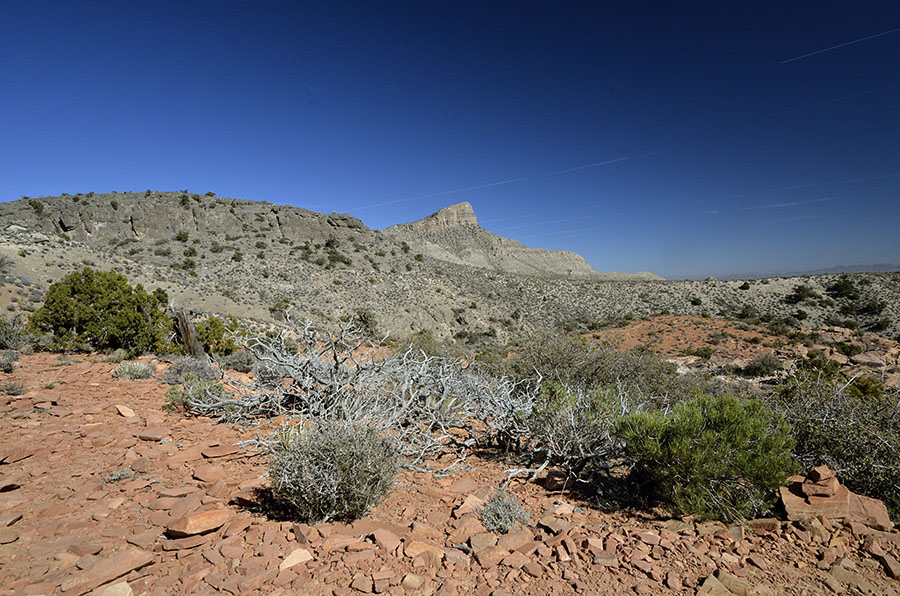 The season was still a little early for the desert tortoises to appear, but we saw a number of lizards and a kit fox – a nice surprise.
The season was still a little early for the desert tortoises to appear, but we saw a number of lizards and a kit fox – a nice surprise.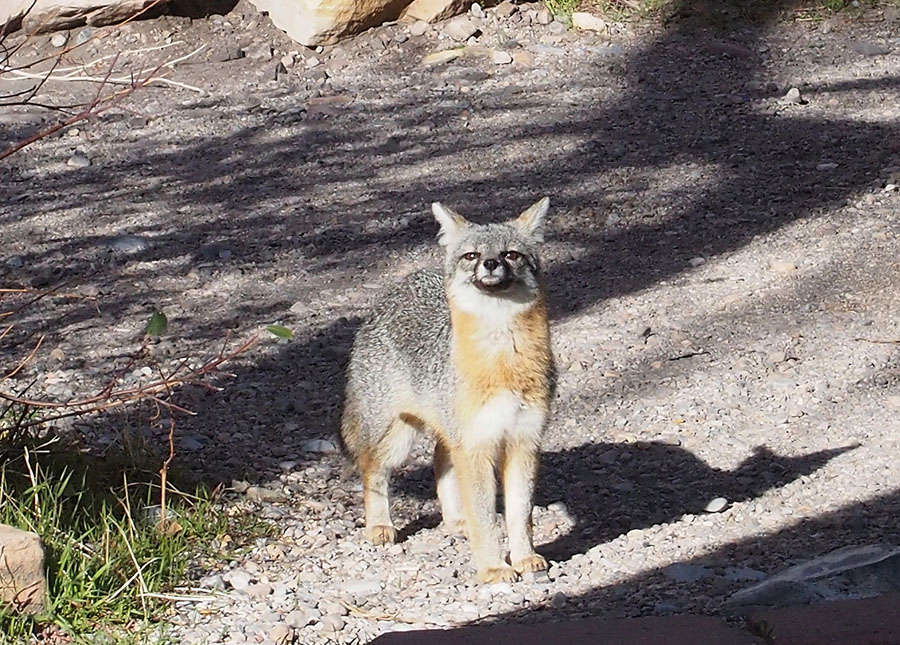 While we thought the dam and Red Rock were really neat, Valley of Fire State Park was the most impressive. It’s smaller than Red Rock Canyon, more compact, but we liked that there were a number of shorter hikes on a variety of terrain so we could sample different things in just one day. Oh, the colors!
While we thought the dam and Red Rock were really neat, Valley of Fire State Park was the most impressive. It’s smaller than Red Rock Canyon, more compact, but we liked that there were a number of shorter hikes on a variety of terrain so we could sample different things in just one day. Oh, the colors!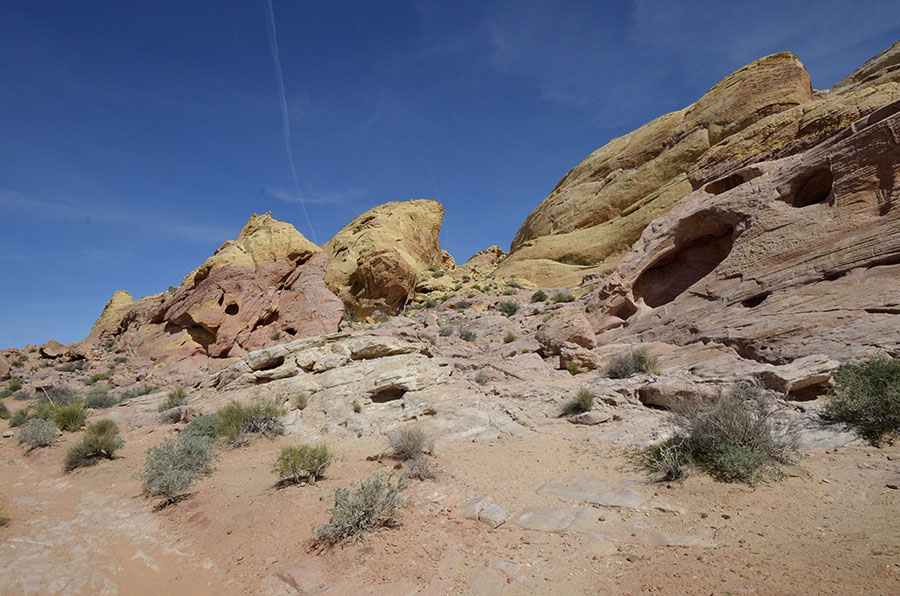 Pinks, yellows, reds… sand as fine as powdered sugar… sweeping vistas…
Pinks, yellows, reds… sand as fine as powdered sugar… sweeping vistas…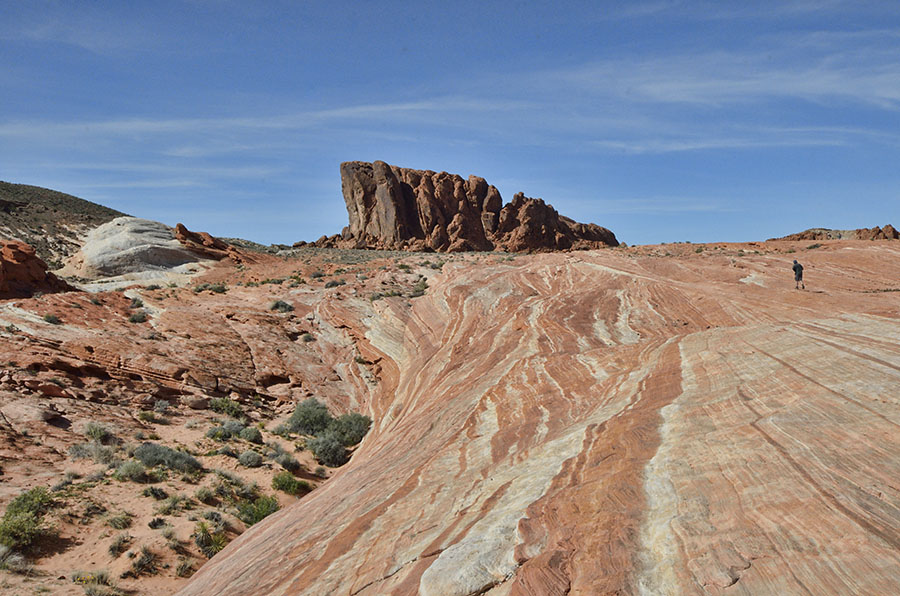 We kept an eye out for desert bighorn sheep that are known to be in the area though we didn’t see any. But we did share a picnic table with a young family, and the husband turned out to be the #6 Opposing Solo pilot on the Air Force’s Thunderbirds! Jim enjoyed talking airplanes with him, and it was just a very cool thing. (He’s much cuter in person than in his official photo.)
We kept an eye out for desert bighorn sheep that are known to be in the area though we didn’t see any. But we did share a picnic table with a young family, and the husband turned out to be the #6 Opposing Solo pilot on the Air Force’s Thunderbirds! Jim enjoyed talking airplanes with him, and it was just a very cool thing. (He’s much cuter in person than in his official photo.)
I think that going to wild places like Valley of Fire is most fun if you unleash your sense of wonder – imagining things in the odd rock shapes, marveling at the colors, pondering the forces of wind and water and uplift that created this beautiful desert landscape.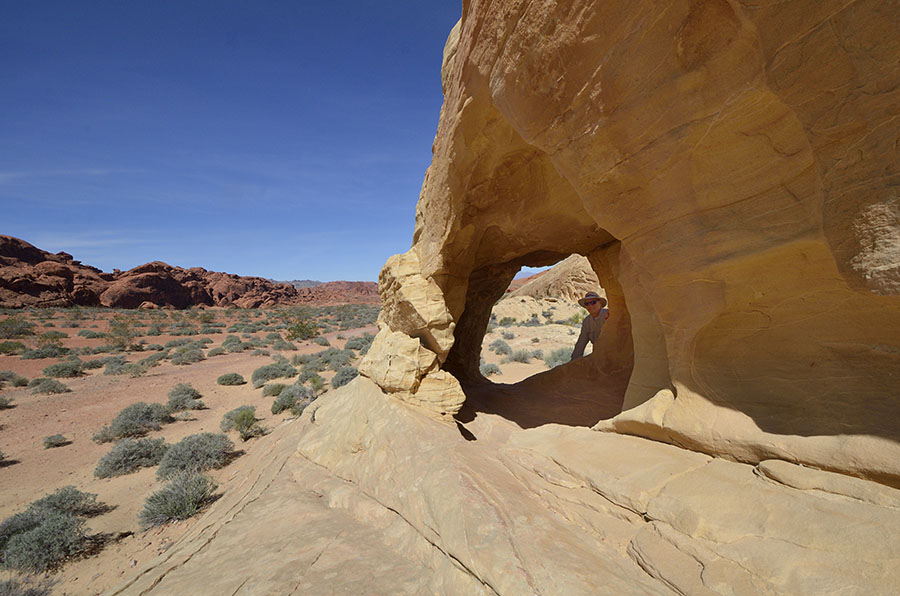 Petroglyphs were scrawled like ancient graffiti in some sections of the park, and although we couldn’t decipher many of them, the bighorn sheep were easy to see.
Petroglyphs were scrawled like ancient graffiti in some sections of the park, and although we couldn’t decipher many of them, the bighorn sheep were easy to see.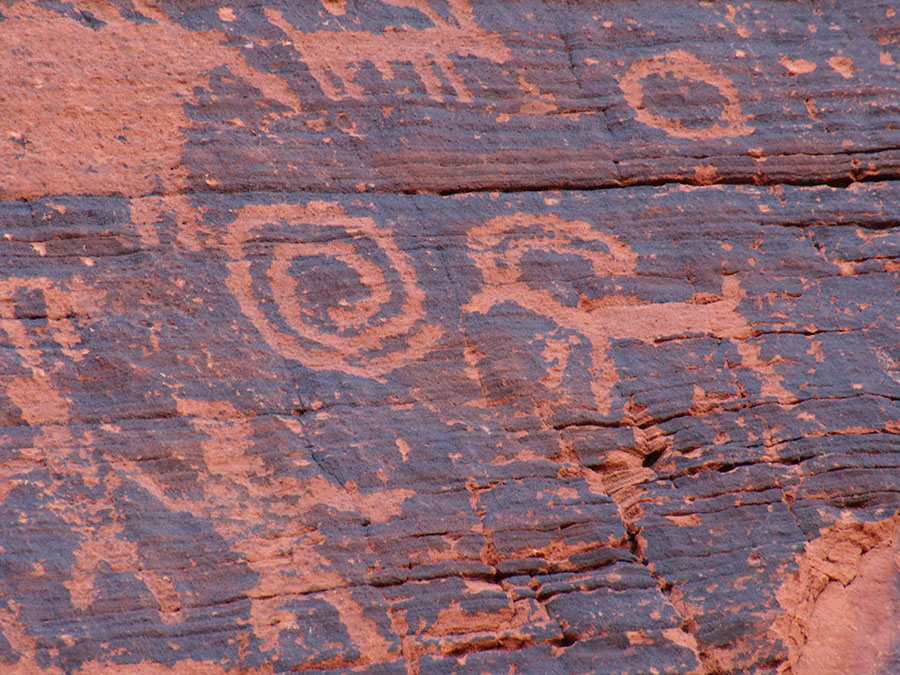 I know some people love the glittering lights and action in the city of Las Vegas, but we think we found the best that Vegas has to offer.
I know some people love the glittering lights and action in the city of Las Vegas, but we think we found the best that Vegas has to offer.

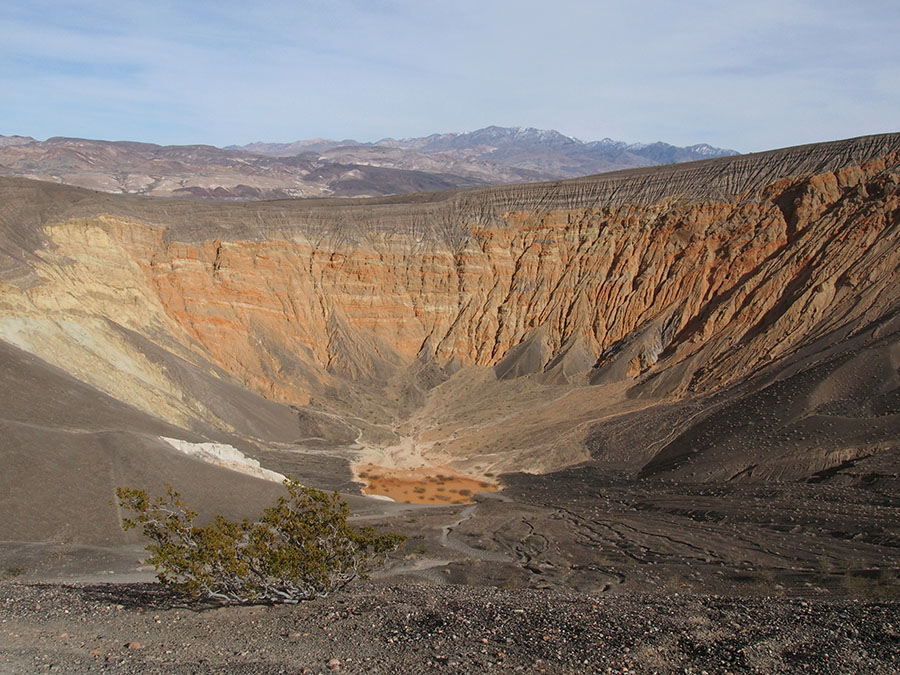 The colors on the far side, 1/2 mile away, are deposits from an ancient alluvial fan that were exposed by the explosion. Cinders create a moonscape all around the crater – stark but beautiful.
The colors on the far side, 1/2 mile away, are deposits from an ancient alluvial fan that were exposed by the explosion. Cinders create a moonscape all around the crater – stark but beautiful.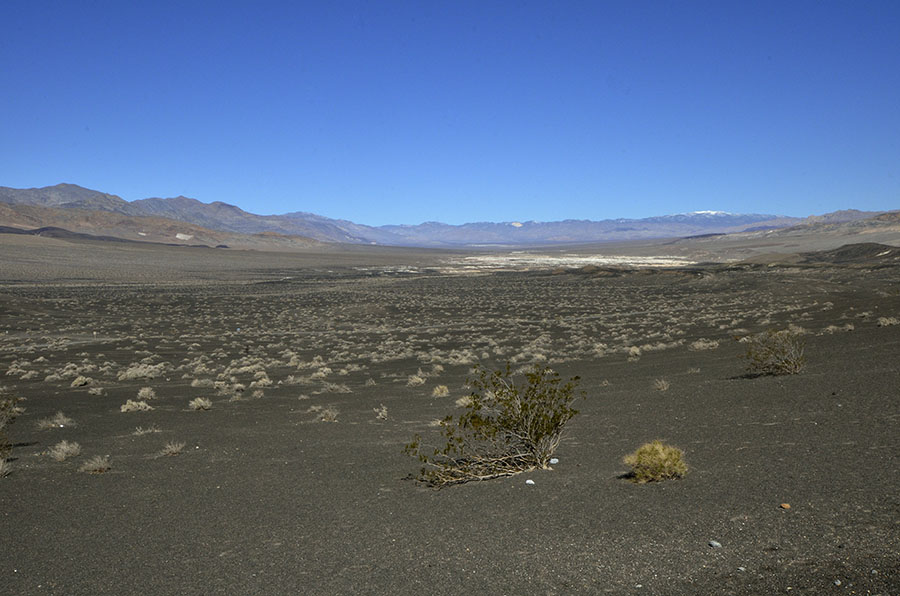 Starting from the crater we headed out the 27 mile long road to the
Starting from the crater we headed out the 27 mile long road to the 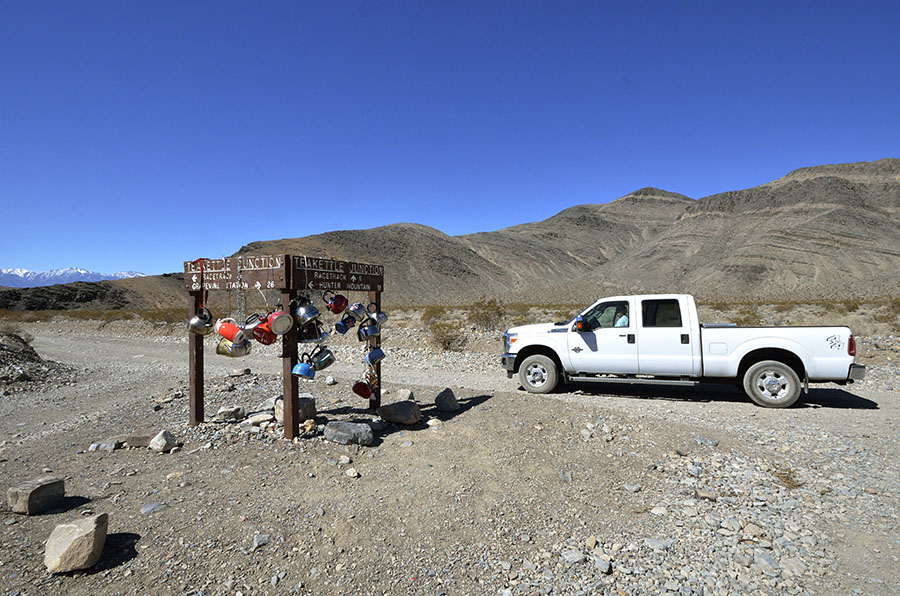 The Racetrack is a playa – a dry lake bed, light tan in color among darker surrounding rocks. There’s an “island” of dark rock at the north end called the Grandstand where we could climb for a better view of the former lake. A roadrunner was walking on the playa recently, leaving footprints in the mud softened by recent rain. Rain (and possibly ice) is the secret to the magic of the Racetrack, where rocks that tumble from the mountains move across the playa, aided by strong winds.
The Racetrack is a playa – a dry lake bed, light tan in color among darker surrounding rocks. There’s an “island” of dark rock at the north end called the Grandstand where we could climb for a better view of the former lake. A roadrunner was walking on the playa recently, leaving footprints in the mud softened by recent rain. Rain (and possibly ice) is the secret to the magic of the Racetrack, where rocks that tumble from the mountains move across the playa, aided by strong winds. With only 2″ of rainfall annually, the rocks don’t have a lot of opportunities to move, but when they do they leave trails that snake across the playa, crossing other trails, and sometimes taking strange turns.
With only 2″ of rainfall annually, the rocks don’t have a lot of opportunities to move, but when they do they leave trails that snake across the playa, crossing other trails, and sometimes taking strange turns.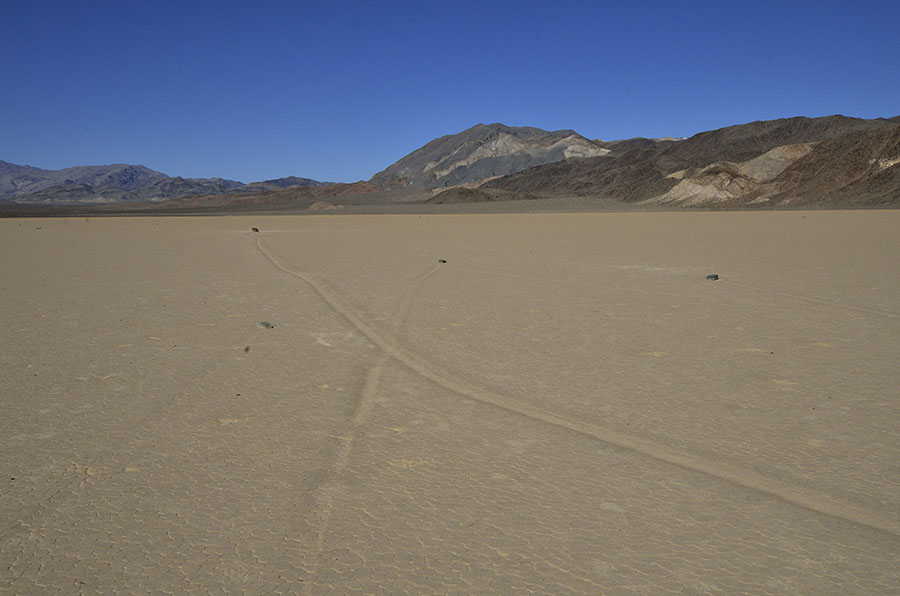 We spent a couple of hours exploring and photographing the playa and the moving rocks – it was well worth the bone-shaking ride out there.
We spent a couple of hours exploring and photographing the playa and the moving rocks – it was well worth the bone-shaking ride out there.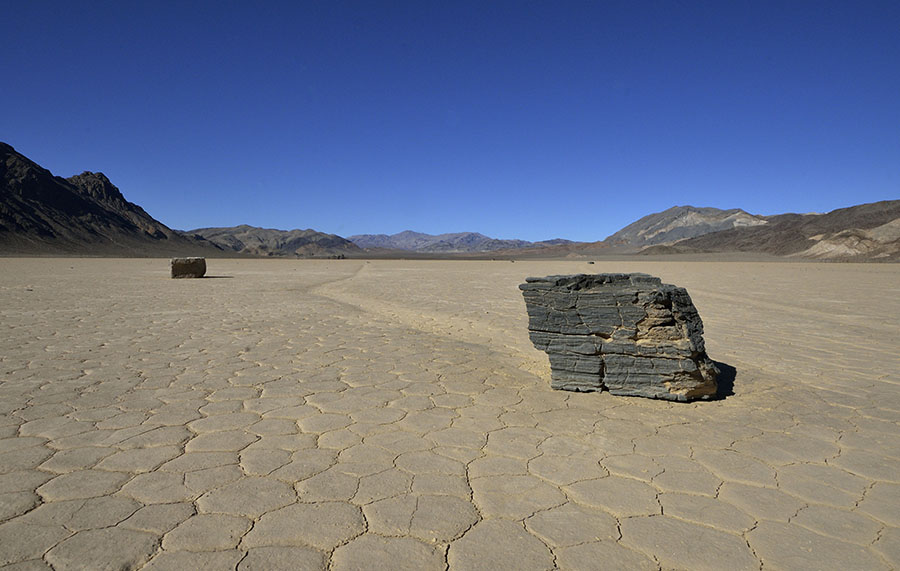 As the sun dropped lower and the light grew warmer we stopped to enjoy the Joshua trees at the higher elevations…
As the sun dropped lower and the light grew warmer we stopped to enjoy the Joshua trees at the higher elevations…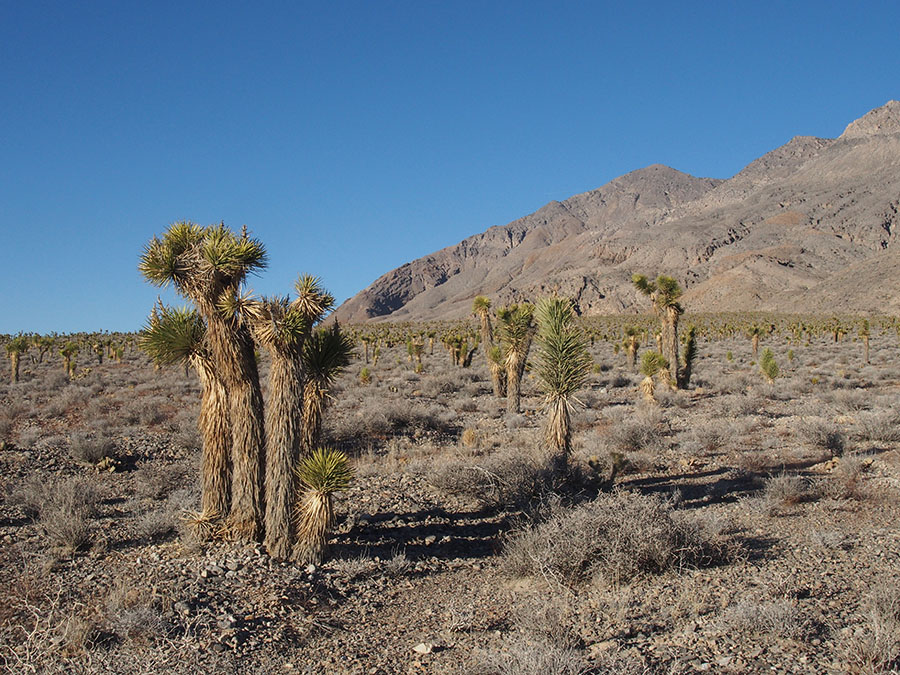 …and the barrel cactus lower down, with pink tops hinting at new spring growth.
…and the barrel cactus lower down, with pink tops hinting at new spring growth.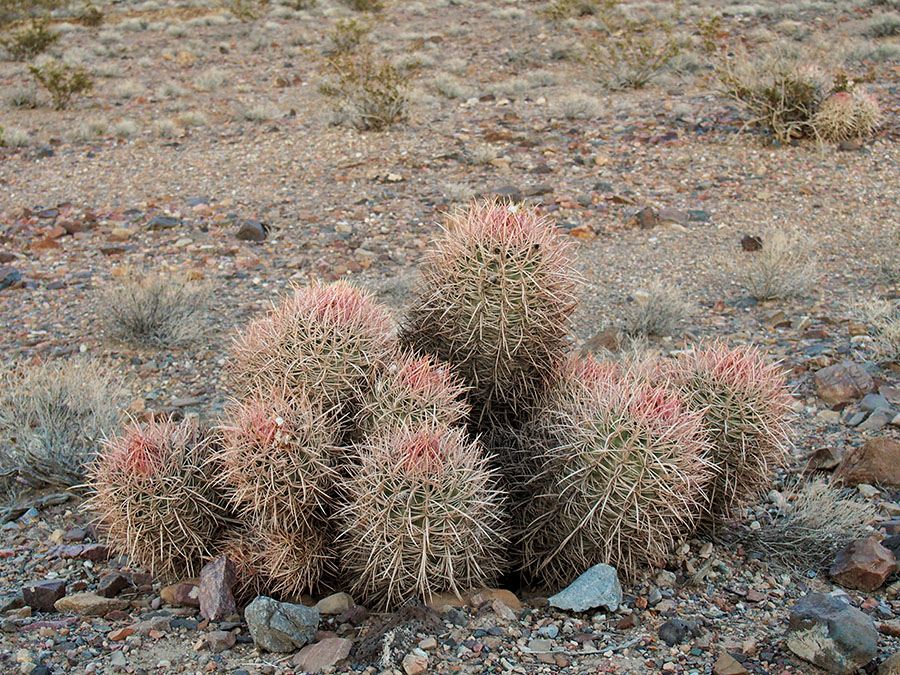 To cap another amazing day, I enjoyed seeing so many stars in the clear, dark sky. Orion’s Belt and the Seven Sisters were a welcome sight on a warm night.
To cap another amazing day, I enjoyed seeing so many stars in the clear, dark sky. Orion’s Belt and the Seven Sisters were a welcome sight on a warm night.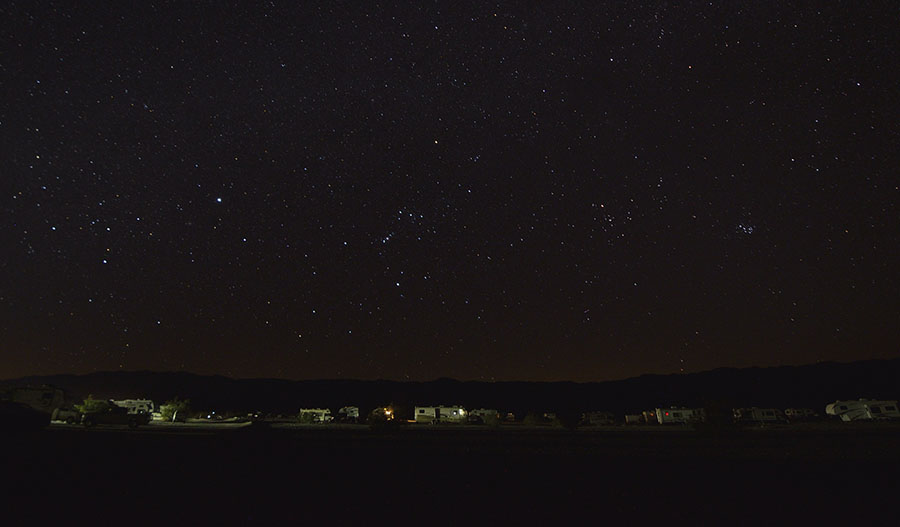 The following morning we hiked into
The following morning we hiked into 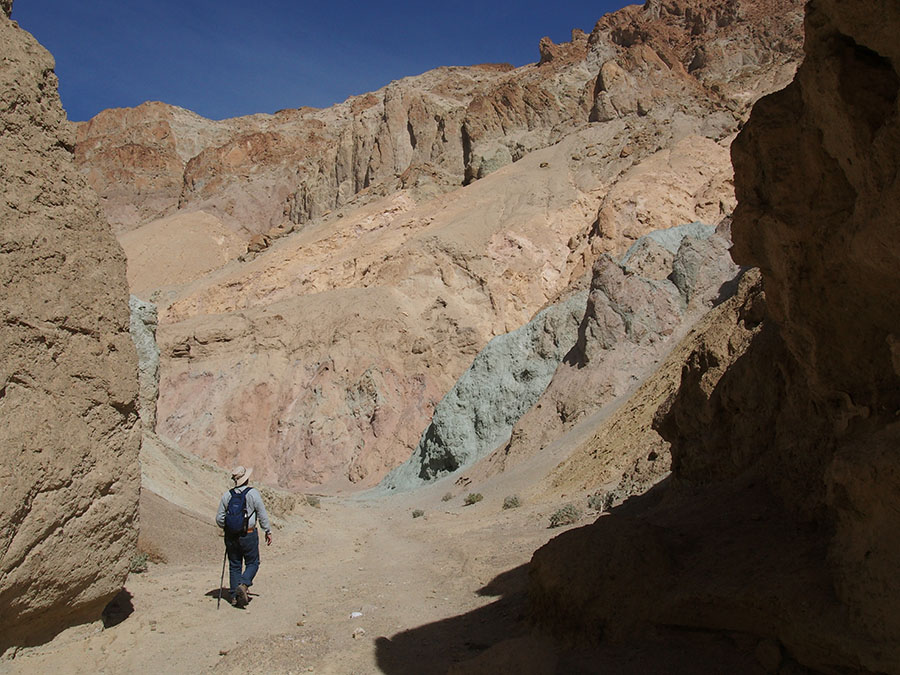 The hike was a lot of fun, but it included two big rockfalls that we had to climb. Thankfully Jim is a better climber than me so with his help I felt less scared about making it, though the climb down was tougher than going up. It looks easier than it was!
The hike was a lot of fun, but it included two big rockfalls that we had to climb. Thankfully Jim is a better climber than me so with his help I felt less scared about making it, though the climb down was tougher than going up. It looks easier than it was!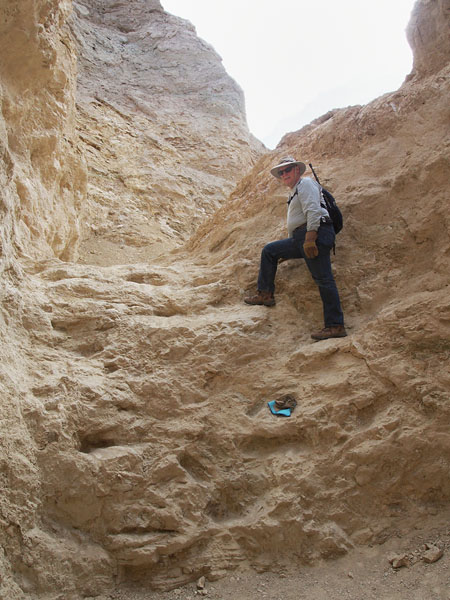 Our favorite!, we declared. So dramatic and colorful!
Our favorite!, we declared. So dramatic and colorful!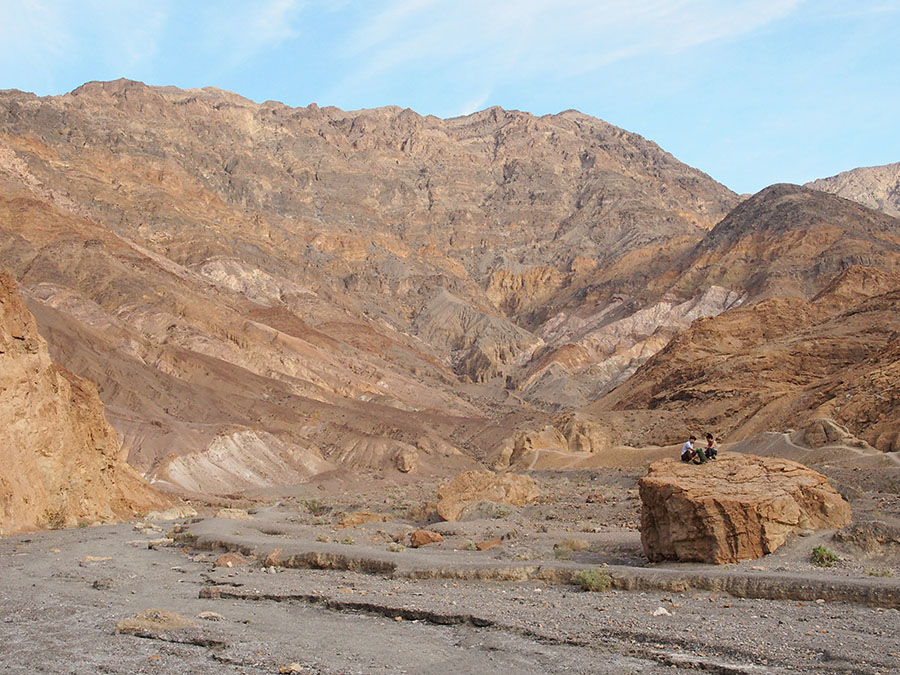 Then we spent the afternoon hiking
Then we spent the afternoon hiking 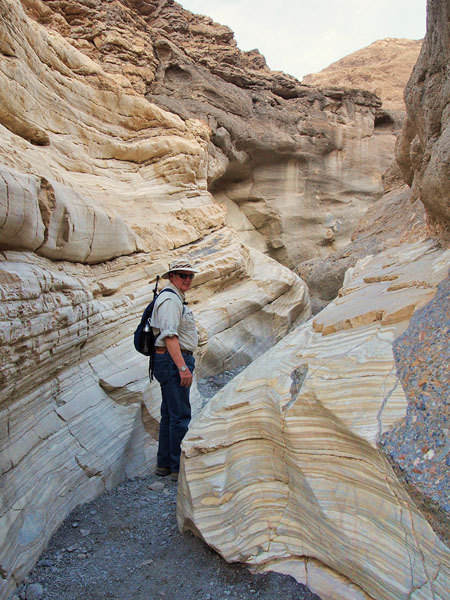
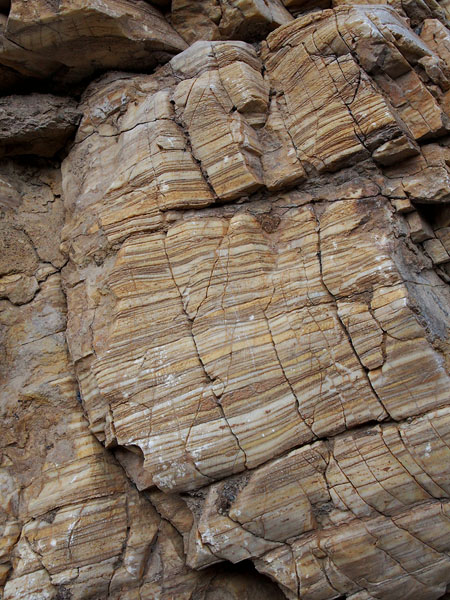 I could bore you with endless photographs – but nothing beats seeing it for yourself. It was quiet and serene, cool and intimate as the sun dropped lower. Each place we explored was so different from the last – I think that’s one of the things that struck us most about Death Valley.
I could bore you with endless photographs – but nothing beats seeing it for yourself. It was quiet and serene, cool and intimate as the sun dropped lower. Each place we explored was so different from the last – I think that’s one of the things that struck us most about Death Valley.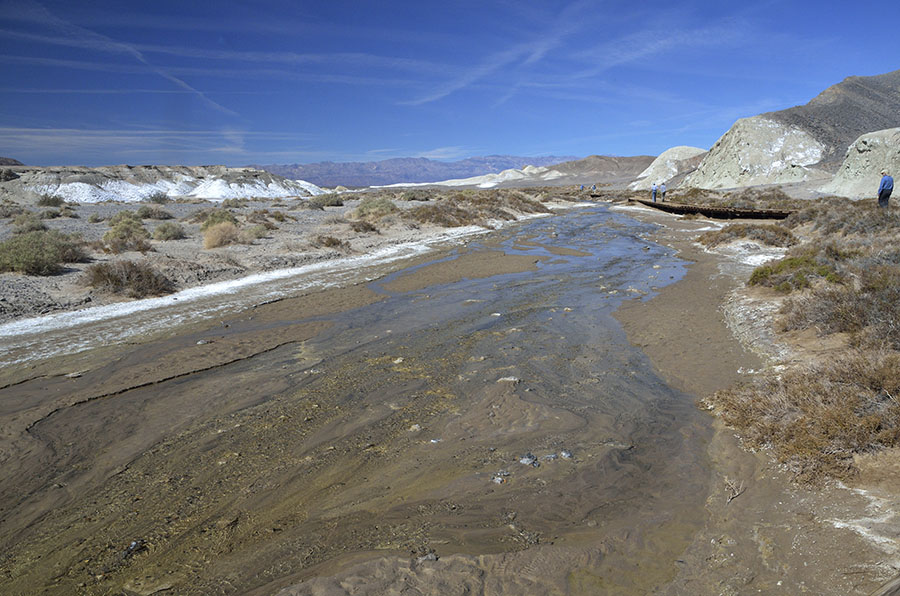 In addition to sodium chloride salt, borax is also found in quantity on the surface of the valley floor as well as buried underground. Borax collection and mining were the most profitable pursuits in the area, and the “20 Mule Team” borax brand was representative of the effort it took to transport the borax out of the valley.
In addition to sodium chloride salt, borax is also found in quantity on the surface of the valley floor as well as buried underground. Borax collection and mining were the most profitable pursuits in the area, and the “20 Mule Team” borax brand was representative of the effort it took to transport the borax out of the valley.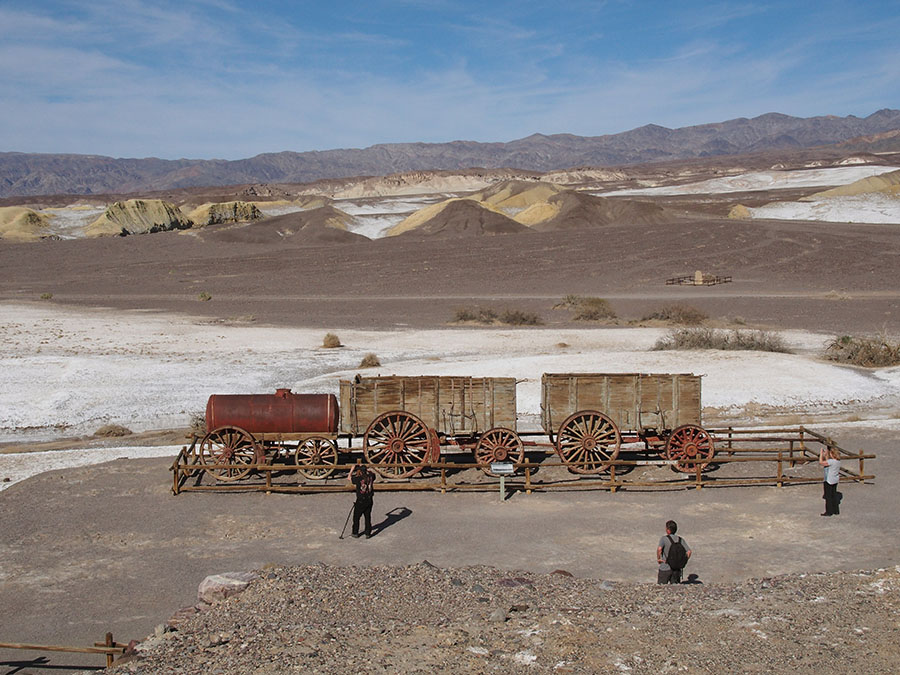 It’s mind-boggling to think about how much human activity – how much life – has occurred in such an unwelcoming place like Death Valley. A surprising variety of wildlife and plant life thrive in the harsh driest and lowest place in the U.S., but it’s adaptable and hardy – the secret to survival. We definitely plan to return to explore the park further (in the cooler months!)
It’s mind-boggling to think about how much human activity – how much life – has occurred in such an unwelcoming place like Death Valley. A surprising variety of wildlife and plant life thrive in the harsh driest and lowest place in the U.S., but it’s adaptable and hardy – the secret to survival. We definitely plan to return to explore the park further (in the cooler months!)